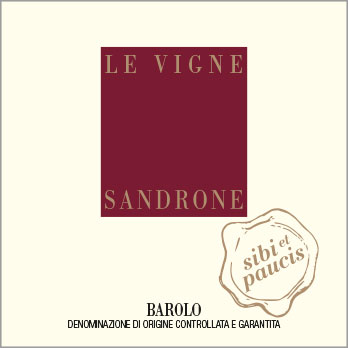
- Barolo DOCG
- 100% Nebbiolo
- Spontaneous fermentation from indigenous yeast
- Maceration and fermentation in open steel tanks
- Malolactic fermentation and ageing in French oak tonneaux of 500 liters
- The 2011 Le Vigne "sibi et paucis" was aged a further 6 years after the original release date of September 2015 in the perfect conditions of Luciano's personal winery cellar.
- First vintage: 1990
- Vineyards in the villages of: Barolo: Vignane Serralunga d'Alba: Baudana
Castiglione Falletto: Villero
Novello: Merli - Alcohol: 14,5%
- Recommended drinking time: 2020 - 2045
LE VIGNE Barolo 2011
Tasting notes
In the glass, the deep color of this wine indicates a very hot, ripe year; the aromatic profile confirms the impression, with ripe black and red raspberries, red cherries, rose petals, licorice and a warm, spicy element.
The general impression of the nose is one of lift – this is a wine whose aromas jump from the glass.
On the palate, the wine is direct and linear, slightly less multidimensional than its brothers from cooler vintages. In the mouth, the impression is one of pure pleasure: this is a wine that seduces the palate with forward, ripe fruit, fresh acidity and surprisingly good structure.
In the context of the vintage, this is a wine that is unexpected – it delivers more than the vintage promises. The finish has a smooth mineral aspect that balances the fully resolved tannins and warm, mouthfilling sensations that linger on.
Ratings for the vintage 2011
Wine Advocate 95 points
James Suckling 98 points
Vinous 96 points
Wine Enthusiast 94 points
Wine&Spirits 95 points
Falstaff 96 Punkte
I Vini di Veronelli 3 stelle / 95 points
Decanter 93 points
Kerin O'Keefe 94 points
Evolution of the vintage 2011
2011 was a particular and unique vintage. Early spring was hot and the bud break was approximately 20 days ahead of normal. The season that followed had the same rhythm of anticipating by 20 days the flowering and berry set.
May and June continued hot and the plants remained well ahead of the historical norms for development. Cooler weather in July, accompanied by several rain showers helped mitigate the torrid growth and refresh the thirsty plants. However, a torridly hot second half of August was followed by an equally hot beginning of September; it was called “the warmest September in 150 years.”
The result was exceptionally ripe fruit; if the vineyard work had been too aggressive in reducing yields the results were fruit bombs lacking in structure and freshness. Luciano and Luca were able to anticipate the needs of the vines, never cutting away too much and generally leaving more fruit to help slow the rapid accumulation of sugars.
By mid-September, the onset of lower night-time temperatures mitigated the warmth and allowed the wine to gain an excellent ripe tannin and good color, as well as truly interesting aromatic profile.
Harvest was generally easy but most important was the work done in the vines in previous months.
Harvest took place from October 8th until 24th.